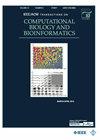用于酶功能预测的并行卷积对比学习方法。
IF 3.4
3区 生物学
Q2 BIOCHEMICAL RESEARCH METHODS
IEEE/ACM Transactions on Computational Biology and Bioinformatics
Pub Date : 2024-08-21
DOI:10.1109/TCBB.2024.3447037
引用次数: 0
摘要
酶的功能标记在医学领域、工业生物学和其他领域具有广泛的应用价值。科学家通过酶委员会(EC)编号来定义酶的类别。目前,虽然已有一些酶功能预测工具,但其效果尚未达到应用水平。为了提高酶功能预测的精度,我们提出了一种并行卷积对比学习(PCCL)方法来预测酶功能。首先,我们使用先进的蛋白质语言模型 ESM-2 对蛋白质序列进行预处理。其次,PCCL 将卷积神经网络(CNN)和对比学习相结合,提高了多功能酶的预测精度。对比学习可以使模型更好地处理类不平衡问题。最后,深度学习框架主要由三个并行的 CNN 组成,用于全面提取样本特征。我们基于三个评估指标将 PCCL 与最先进的酶功能预测方法进行了比较。我们的模型在两个测试集上的性能都有所提高。特别是在较小的测试集上,PCCL 的 AUC 提高了 2.57%。源代码可从 https://github.com/biomg/PCCL 下载。本文章由计算机程序翻译,如有差异,请以英文原文为准。
Parallel Convolutional Contrastive Learning Method for Enzyme Function Prediction
The function labeling of enzymes has a wide range of application value in the medical field, industrial biology and other fields. Scientists define enzyme categories by enzyme commission (EC) numbers. At present, although there are some tools for enzyme function prediction, their effects have not reached the application level. To improve the precision of enzyme function prediction, we propose a parallel convolutional contrastive learning (PCCL) method to predict enzyme functions. First, we use the advanced protein language model ESM-2 to preprocess the protein sequences. Second, PCCL combines convolutional neural networks (CNNs) and contrastive learning to improve the prediction precision of multifunctional enzymes. Contrastive learning can make the model better deal with the problem of class imbalance. Finally, the deep learning framework is mainly composed of three parallel CNNs for fully extracting sample features. we compare PCCL with state-of-art enzyme function prediction methods based on three evaluation metrics. The performance of our model improves on both two test sets. Especially on the smaller test set, PCCL improves the AUC by 2.57%.
求助全文
通过发布文献求助,成功后即可免费获取论文全文。
去求助
来源期刊
CiteScore
7.50
自引率
6.70%
发文量
479
审稿时长
3 months
期刊介绍:
IEEE/ACM Transactions on Computational Biology and Bioinformatics emphasizes the algorithmic, mathematical, statistical and computational methods that are central in bioinformatics and computational biology; the development and testing of effective computer programs in bioinformatics; the development of biological databases; and important biological results that are obtained from the use of these methods, programs and databases; the emerging field of Systems Biology, where many forms of data are used to create a computer-based model of a complex biological system

 求助内容:
求助内容: 应助结果提醒方式:
应助结果提醒方式:


